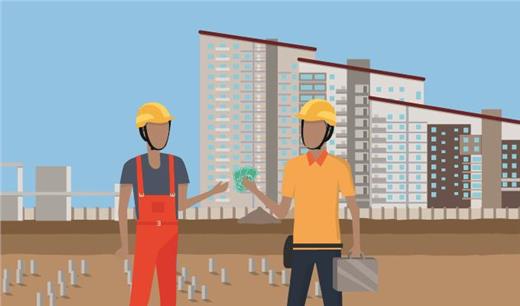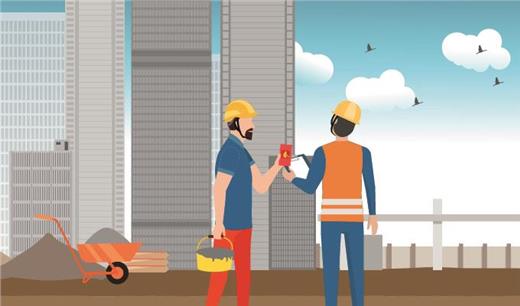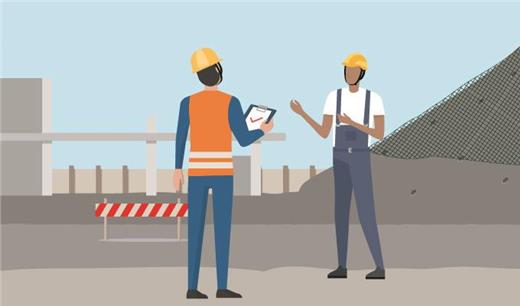Case Studies
Our case studies contain analysis and discussion points for users to better understand the legal provisions. They also provide suggestions on how to prevent corruption, fraud and malpractices.
A senior engineer was asked by a contractor to manipulate tender requirements in favour of his company in the bidding process.
Highlander Construction Ltd, the main contractor of a housing development project, employed five crane operators for lifting building materials for sub-contractors in the construction site. The staff handbook of Highlander clearly stipulated that staff was prohibited from soliciting or accepting advantages from persons having business dealings with the company, including sub-contractors. The crane operators were briefed this policy by the Human Resources Manager when they were first recruited.
Shortly after the commencement of work, the crane operators discussed a trade practice among themselves and decided to charge sub-contractors ‘tea money’ of $9,000 per month for expediting lifting of their building materials. To those sub-contractors who did not pay, the crane operators would delay the lifting of their materials.
CHAN was the director of Shing Kee Engineering Ltd, a subcontractor responsible for the superstructure plumbing works. He was familiar with the crane operators. They often went out for meals and gambled after work. When the crane operators were in financial needs, CHAN would lend them money.
A resident engineer YU was aware that the crane operators often gave priority to CHAN in lifting plumbing materials before attending to other sub-contractors. He was also aware that the crane operators and CHAN kept a very close relationship. Although there were suspicious undertakings, YU did not make a complaint to the ICAC as he had no evidence of corruption.
The crane operators accepted $35,000 from CHAN over a period of seven months as a reward for giving special attention to the lifting of CHAN’s materials. The incident was finally revealed and they were all arrested and eventually convicted of offering/accepting advantages as a reward for expediting lifting for CHAN, contrary to Section 9 of the Prevention of Bribery Ordinance (POBO). All of them got imprisonment sentences.
CHAN was the breadwinner of his family. While serving his term, his son who was studying abroad had to return to Hong Kong as his family could no longer afford the costs involved.
Questions
- Why were CHAN and the crane operators convicted of corruption offences?
- Are customary/trade practices excuses for the crane operators to take advantages on the subcontractors?
- What are the possible costs of corruption?
- Should the resident engineer report any suspected corruption to the ICAC
if he only has suspicion and do not have any evidence?
A large building project developed by a public body (PB), involving five residential blocks and a commercial complex with a car park, should be completed by April 2003. The PB awarded the project to a main contractor CK Holdings Ltd (CK) in May 2001 at $1,800 million. Central Architects and Engineers Ltd (CAE) was appointed by the PB as the project consultant.
There were a number of sub-contractors responsible for different aspects of work for this project. Among them, CK sub-contracted all plastering works to Diamondhead Plastering Company and CHONG was its proprietor.
Being the project consultant, CAE was responsible for monitoring and supervising the workmanship and progress of work including that for CK and its various sub-contractors. CAE had recruited a team of five residential site supervisory staff headed by a Clerks of Works (CoW) Martin. All of them were public servants acting as an agent for the PB in the project.
CHONG, Martin and other site supervisory staff of CAE always had dinner together and played mahjong after work. Being a habitual gambler, Martin was in great debt and often borrowed money from his relatives and friends.
CHONG also invited Martin to Shenzhen on several occasions to have lavish meals and attend nightclubs. CHONG paid all the bills on these occasions. Furthermore, CHONG sometimes offered Martin loans and chips in the casinos in Macau. Martin considered CHONG treated him well solely on friendly basis.
Shortly after their visits to Shenzhen and Macau, CHONG went to Martin’s site office and suggested to adopt a quicker method for laying screed. Instead of using a thorough mixture of cement, sand, aggregate and water, CHONG proposed to adopt a ‘semi-dry sand’ method in which a layer of sand was put onto a layer of cement and thereafter water was sprayed onto the layers. Although this shortcut method of laying screed was used in some other projects, it was not allowed in this project and it was clearly stipulated in the Specifications. Thus, Martin immediately objected to the suggestion.
On the day before Winter Solstice, CHONG approached Martin again and pleaded for relaxation on the screeding method. He indicated that the screeding work had been behind schedule and the liquidated damage for delay was heavy. CHONG offered a laisee packet of $50,000 to Martin claiming that it was for the forthcoming Winter Solstice and requesting for ‘flexibility’ in acceptance of work completed. He also demanded Martin not to be too stringent when inspecting the work. He further indicated that since he had been treating Martin well for so long it should be time for Martin to do something in return. Finally, Martin decided to accept the bribe, accede to CHONG’s request and connive at the shortcut screeding method.
CHONG and Martin were later arrested by the ICAC and were found guilty of offences under Section 4 of the Prevention of Bribery Ordinance (POBO).
Questions
- How did CHONG and Martin violate the POBO?
- What do you think about the over-socialisation between Martin and CHONG?
- Is customary practice, such as giving laisees during festivals (開工利是), a defence to accept an advantage? Why?
- Being a habitual gambler, what is the possible risk of Martin in respect of corruption?
A Government Department (the Department) awarded a slope maintenance contract to Chongs Construction Company Ltd, which then sub-contracted the works to JKW Subcontracting Company (JKW), of which CHEUNG was the proprietor.
From time to time, the Department issued to the contractor works orders (WOs) describing the work required, location and estimated value of the work. Upon completion of work, an Inspector of Works (IoW) of the Department would physically inspect and verify whether the work done was in compliance with the required standard. Based on the recommendation made by the IoW, the project engineer would approve payment to the contractor by signing on the WO concerned. He was not required to physically inspect every piece of work completed as over a hundred WOs were issued every month.
When the engineer signed on the WO, the contractor could apply for payment by submitting the WO to the Accounting Section of the Department. A contractor could only apply for payment on completion of work as certified on the WO.
In conjunction with the payment process, the Quantity Surveying Section of the Department counter-checked the work of the contractor. However, the Quantity Surveyors of the Section could only randomly check 10% of the WOs issued. Both the project engineer and the quantity surveyors might therefore not be able to detect abuse in relation to the WOs.
YAU was an IoW of the Department responsible for overseeing the works carried out by JKW. In March 2000, CHEUNG approached YAU and urged YAU to expedite the checking of WOs. Hence, CHEUNG could receive payment earlier. In return, CHEUNG offered YAU a part-time job with $8,000 a month.
Between April 2000 and December 2001, YAU accepted a part-time job from CHEUNG as a reward for expediting the checking of WOs issued to CHEUNG. On many occasions, YAU certified work completion on the WOs though the work concerned had not even commenced.
YAU and CHEUNG were later arrested by the ICAC and were found guilty of offences under Section 4 of the Prevention of Bribery Ordinance (POBO). Both YAU and CHEUNG were sentenced to imprisonment.
Questions
- How did YAU and CHEUNG violate Section 4 of the Prevention of Bribery Ordinance?
- Besides the offer of a part-time job, what else can be classified as an“advantage”?
- What should be watched out for in site supervision to prevent malpractice?
In a construction project of a commercial complex valued over $500 million, the main contractor employed ten Foremen to monitor the work of sub-contractors. A Site Engineer of the company, who took charge of the Foremen, was responsible for the overall supervision of the project.
The salaries of the Foremen and other workers were calculated on a daily basis. Each of them was required to punch an attendance card when reporting on and off duty every day. The attendance cards and the punching machine were placed in the Engineer’s office so that when the Foremen and other staff reported on or off duty, they had to punch the cards in the Engineer’s office. The Engineer was responsible for ascertaining that his subordinates personally punched the cards. At the beginning of each month, the Engineer was responsible for calculating the salaries of his subordinates based on their individual attendance records for the previous month. His calculations and the punched cards were then sent to the Accounts Department of the company for processing salary payment.
As the family of one of the Foremen, CHAN, was in Chinese Mainland, CHAN would seek every opportunity to go to the Mainland to see his family. One day, CHAN went to see the Engineer and requested for three days’ off. CHAN, however, requested the Engineer not to record his leave but instead punched the attendance card for him so as to show that he was working on the three days. In return, CHAN offered the Engineer $500 for assisting him in punching the attendance card and turning a blind eye to his absence.
The Engineer turned down the offer and reported the matter to the ICAC. Eventually, CHAN was convicted for offering a bribe to the Engineer, contrary to Section 9 of the Prevention of Bribery Ordinance (POBO) and was sentenced to imprisonment.
Questions
- Has the Foreman committed any criminal offence?
- If the Engineer rejects the bribe but still assists the Foreman in falsifying attendance, has the Engineer committed any bribery offence?
- If the Engineer accepts the bribe from the Foreman for assisting him in forging attendance records, what would be the possible consequences to the Engineer?





